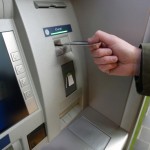 One of the reasons many people love prepaid debit cards instead of credit cards is that they provide “pay as you go” convenience. Pay as you go is particularly important during the current financial crisis.
One of the reasons many people love prepaid debit cards instead of credit cards is that they provide “pay as you go” convenience. Pay as you go is particularly important during the current financial crisis.
During the credit boom years, many consumers got a little too comfortable using credit cards and lines of credit to pay for everything from their daily cup of coffee at Starbucks to vacations. The result? A huge percentage of us are in debt up to our eyeballs.
The new trend is to “pay as you go”, or only buy things you currently have enough cash for. Prepaid debit cards, teen cards, and gift cards are a perfect way to make sure you only buy what you can currently afford.
Unlike credit cards, debit cards only allow you to purchase goods or services if you currently have enough cash on deposit to cover the cost. Debit cards are linked to an account. If you have sufficient funds on deposit in your account, you can use the funds to purchase something. If you don’t have sufficient funds, you can’t. Doesn’t it feel good to stay within your means, and only pay for what you can afford?
There are some situations where you can, however, get overextended with a debit card. Here’s an example. Suppose you have $100 in your debit card account, and you forget that the bank charges you a monthly fee of $5 for the account, and that they automatically deduct the fee on the 1st of every month. On the 1st, you go to a store and use your debit card to purchase $99 of groceries, thinking you have enough money in your account.
In some situations, the transaction will be approved when you swipe your debit card at the point of sale, even though you don’t have enough funds in your account to cover the purchase. If you have an overdraft policy on your account, you may end up getting charged an expensive overdraft fee (which can be $20-$30 for overdrafting by just a few dollars).
A recent study by the Center for Responsible Lending, a nonpartisan research and policy group, describes what it calls the “overdraft domino effect.” One college student whose bank records were analyzed by the center made seven small purchases including coffee and school supplies that totaled $16.55 and was hit with overdraft fees that totaled $245.
Obviously, even a few of these overdrafts can add up, and ruin the whole “pay as you go” benefit of a debit card. Luckily, Federal Regulators and commentators are taking a look into these charges. The New York Times recently ran a lead editorial complaining about these overdraft practices.
To avoid being charged overdraft fees for using your debit card, make sure to keep up to date on the exact status of your account balance. Treat a prepaid debit card account just like a check book – balance it religiously.
Some types of prepaid cards don’t have this problem. “Closed loop” (or non-reloadable) debit cards (such as gift cards) only allow you to spend the exact amount that has been loaded onto your card. A $100 Walmart gift card can only be used for $100 of purchases.
Enjoy the benefits of pay as you go debit cards – just make sure to monitor your account balance so you don’t end up turning your debit card transaction into an overdraft.
Comments are closed